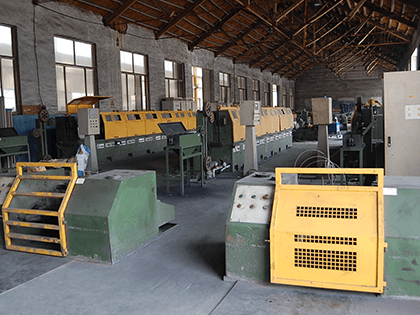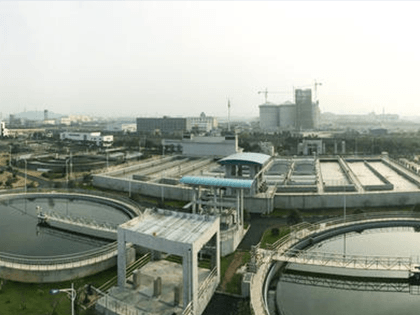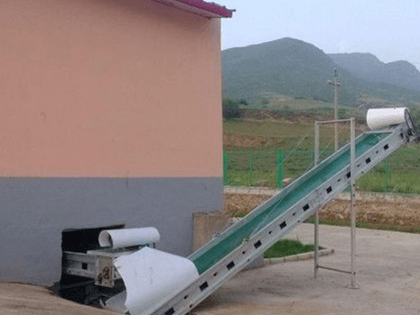The disposal and utilization of tannery sludge
Author: Taida machine Release time:2016-08-20
Reading guidance:By removing the raw materials in leather tanning hair, skin, fat, fiber and other non interstitial collagen, moderately dispersed collagen fiber, adding tanning agent to make collagen chemical fixation
By removing the raw materials in leather tanning hair, skin, fat, fiber and other non interstitial collagen, moderately dispersed collagen fiber, adding tanning agent to make collagen chemical fixation, fat-liquor lubrication, dye, coating finishing agent, and finally get the finished leather. According to statistics, each with 1 t hides around 150 kg of the sludge. Both the tanning process of sludge produced, such as: washing sludge, composition to chloride, sulfide, phenol, mainly bacteria; bad hair Liming components in sludge, sulfide, lime, protein, rotten wool pulp etc.; and the terminal sewage treatment produces all kinds of physical and chemical sediments. So the tannery sludge composition, both protein and oil and other organic pollutants, and chromium compounds, sulfide, large amounts of calcium, sodium chloride and sulfate, and a small amount of heavy metal salts and other minerals pollutants. In addition, the tannery sludge moisture content (90% to 98 %), even after draining and dehydration of the sludge, moisture content also has 50% to 80%. So that its nature is very unstable, easily corrupted, the stench of and may for dangerous pathogenic microorganisms and parasites eggs provides a breeding ground, so it is very serious pollution sources.
Tannery sludge to sum up, there are two types of processing methods: to eliminate the pollution for the purpose of tannery sludge treatment and both recycling resources processing. The former includes cast into the sea, landfill, incineration and other methods; the latter includes sewage sludge, compost, construction materials and extract useful information from the etc.. In the past, most foreign countries the cast into the sea, landfill, incineration and composting and other practical methods. The following highlights the several currently in use and has potential application prospect in the treatment of tannery sludge method, and briefly reviewed the advantages and disadvantages.
1. Landfill
Landfill disposal on many occasions only by simply understanding and application for digging landfill, and even open-air dumping. That is, neither process of sludge stabilization or harmless, nor of landfill take necessary anti-seepage, anti fouling processing measures. Therefore, the tannery sludge have harmful ingredients, such as Cr, organic pollutants is likely to pollute the surface water and groundwater. The one-sided economical, but pollution still exist in our country, a lot of tanning factory used.
In Germany, the current sludge treatment methods, there are three: landfill, bio composting and incineration. Among them, chromium tannery sludge is mainly landfill disposal. Landfill should not only strict anti-seepage, anti pollution treatment, still pit to the lowest point of laying the special sewage collection pipes, and collecting pipe of the methane generated by garbage. Nevertheless, due to the more and more strict landfill site constraints, increased costs and potential environmental harm, the processing is facing the pressure is also great.
2. Incineration
Burning method can completely eliminate organic and harmful pathogens in tannery sludge (such as bacteria, virus, parasite eggs), the amount of sludge is reduced greatly, can also use a part of heat. If the chromium sludge incineration residue from incineration, the recovery of chromium after ash. But this method will require special equipment, and the various components of the sludge incineration conditions should be strictly controlled, so the technical requirements and processing costs are very high. But after incineration ash contains a large number of serious carcinogens (six CR), which requires ash must be toxic for two times; in addition to waste incineration also need monitoring processing, sealing recovery. Therefore, the application of this method is limited.
3. Utilization of tannery sludge
. A. Direct utilization of tannery sludge
Can direct use of tannery sludge contains large amounts of organic matter and plant nutrients, nitrogen fertilizer, but in the direct use of always best to avoid food chain, lest on human life caused potential threat. Tannery sludge for agriculture, there are two major problems: high content of heavy metals in sludge Cr, also sludge may contain a wide variety of pathogens and organic pollutants, in order to guarantee the agricultural front must be eliminated.
B. Bio compost
Sludge using generally require after a harmless treatment, to reduce the sludge is easy to corruption stinks of organic matter, reduce the volume of sludge and the number, kill pathogens, reduce the risk of harmful ingredients. Sludge compost made from agricultural fertilizer, and it has economic, simple and advantages of resources. Biological compost although can basically eliminate organic pollution in tannery sludge, but of heavy metals, such as high content of Cr was powerless to stop it.
In addition to using plasma technology of tannery sludge treatment technology, is still in the research and implementation of, hope can effectively eliminate the pollution of tannery sludge, and the processed product to make full use of the prepared with certain additional value of the products, and no secondary pollution ", built tannery sludge treatment of green technology.
Tannery sludge to sum up, there are two types of processing methods: to eliminate the pollution for the purpose of tannery sludge treatment and both recycling resources processing. The former includes cast into the sea, landfill, incineration and other methods; the latter includes sewage sludge, compost, construction materials and extract useful information from the etc.. In the past, most foreign countries the cast into the sea, landfill, incineration and composting and other practical methods. The following highlights the several currently in use and has potential application prospect in the treatment of tannery sludge method, and briefly reviewed the advantages and disadvantages.
1. Landfill
Landfill disposal on many occasions only by simply understanding and application for digging landfill, and even open-air dumping. That is, neither process of sludge stabilization or harmless, nor of landfill take necessary anti-seepage, anti fouling processing measures. Therefore, the tannery sludge have harmful ingredients, such as Cr, organic pollutants is likely to pollute the surface water and groundwater. The one-sided economical, but pollution still exist in our country, a lot of tanning factory used.
In Germany, the current sludge treatment methods, there are three: landfill, bio composting and incineration. Among them, chromium tannery sludge is mainly landfill disposal. Landfill should not only strict anti-seepage, anti pollution treatment, still pit to the lowest point of laying the special sewage collection pipes, and collecting pipe of the methane generated by garbage. Nevertheless, due to the more and more strict landfill site constraints, increased costs and potential environmental harm, the processing is facing the pressure is also great.
2. Incineration
Burning method can completely eliminate organic and harmful pathogens in tannery sludge (such as bacteria, virus, parasite eggs), the amount of sludge is reduced greatly, can also use a part of heat. If the chromium sludge incineration residue from incineration, the recovery of chromium after ash. But this method will require special equipment, and the various components of the sludge incineration conditions should be strictly controlled, so the technical requirements and processing costs are very high. But after incineration ash contains a large number of serious carcinogens (six CR), which requires ash must be toxic for two times; in addition to waste incineration also need monitoring processing, sealing recovery. Therefore, the application of this method is limited.
3. Utilization of tannery sludge
. A. Direct utilization of tannery sludge
Can direct use of tannery sludge contains large amounts of organic matter and plant nutrients, nitrogen fertilizer, but in the direct use of always best to avoid food chain, lest on human life caused potential threat. Tannery sludge for agriculture, there are two major problems: high content of heavy metals in sludge Cr, also sludge may contain a wide variety of pathogens and organic pollutants, in order to guarantee the agricultural front must be eliminated.
B. Bio compost
Sludge using generally require after a harmless treatment, to reduce the sludge is easy to corruption stinks of organic matter, reduce the volume of sludge and the number, kill pathogens, reduce the risk of harmful ingredients. Sludge compost made from agricultural fertilizer, and it has economic, simple and advantages of resources. Biological compost although can basically eliminate organic pollution in tannery sludge, but of heavy metals, such as high content of Cr was powerless to stop it.
In addition to using plasma technology of tannery sludge treatment technology, is still in the research and implementation of, hope can effectively eliminate the pollution of tannery sludge, and the processed product to make full use of the prepared with certain additional value of the products, and no secondary pollution ", built tannery sludge treatment of green technology.
:Use methan in municipal sludge as a kind of resource :Development of sludge anaerobic digestion technology
Relevant news
- 2016-01-12OSC-II Model Sludge Dryer Deliv
- 2016-01-1215T/Day Aerobic Dynamic Ferment
- 2016-01-12Matters Should Be Paid Attentio
- 2016-01-12Methods exploration of chemical
- 2016-01-12Analysis of circulating fluid b
Industry trends
- 2016-01-12Comparison Between Different Sl
- 2016-01-12Adding Calcium and Stable Dispo
- 2016-01-12Sludge Treatment: Methods for S
- 2016-01-12Use Dyeing Sludge As Resource
- 2016-01-12Current situation of sludge dis
Hot spots
Hot-sale products

- Leather Industry Sludge Drying
Production Capacity:1-2200t/h

- Welding Plating Sludge Drying S
Production Capacity:1-2200t/h

- Municipal Sludge Drying Solutio
Production Capacity:1-2200t/h

- Manure Sludge Drying Solution
Production Capacity:1-2200t/h
 中文
中文 English
English Home
Home
